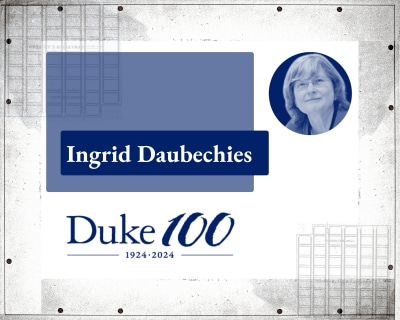
Pratt Trailblazers: Heileen Hsu-Kim
Heileen Hsu-Kim is a leading figure in the study of how environmental contaminants move across the landscape and impact human health
We’re sorry—the news story you were looking for has been archived.
Please see the most recent stories below.

Heileen Hsu-Kim is a leading figure in the study of how environmental contaminants move across the landscape and impact human health

When Becky Simmons first got to Duke in the 1990s, she wouldn’t have guessed it then, but a future awaited her that included graduate school, a husband, two daughters, professorship and ties that would bind them all to Duke for decades.

Cynthia Rudin pens a tribute to the work and leadership of her former advisor and longtime pillar at Duke, Ingrid Daubechies